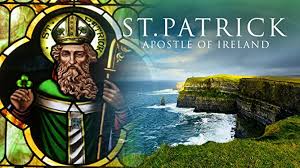
Thanks to the research of Thad Morgan, we are able to learn a few interesting facts about the man that became St. Patrick.
First, he was not Irish; he was born in England circa 385. St. Patrick didn’t make his way to Ireland until Irish pirates kidnapped him at age 16.
The original color for St. Patrick’s Day wasn’t green; it was blue. After the Order of St. Patrick was established in 1783, the organization’s color had to stand out from those that preceded it. Since dark green was already taken, the Order of St. Patrick went with blue.
This might shock some of you but there were no snakes for St. Patrick to banish in Ireland.
St. Patrick was known through folklore for having chased away snakes in Ireland, thus protecting townspeople from the mysterious creatures and sending them to the sea. However, Ireland didn’t have snakes at the time. Surrounded by icy water, Ireland was the last place that these cold-blooded reptiles would want to go. It’s much more reasonable to think that the “snakes” that St. Patrick banished were representative of the Druids and Pagans in Ireland since they were considered evil. With all of this recent talk about popes, it’s worth noting that St. Patrick never got canonized by one. In all fairness, St. Patrick wasn’t the only saint that didn’t go through a proper canonization. In the Church’s first millennium, there wasn’t a formal canonization process at all, so most saints from that period were given the title if they were either martyrs or seen as extraordinarily holy.
If this is my last post, I want all to know that there was only one purpose for all that I have written; to have made a positive difference in the lives of others.
Anthony “Tony” Boquet, Author of “The Bloodline of Wisdom, The Awakening of a Modern Solutionary”.
